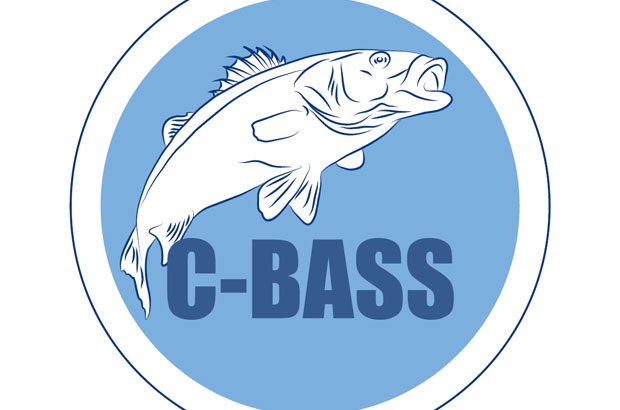
The European seabass (or bass as it is more commonly known) is one of the most sought-after fish for recreational sea anglers in England and Wales, and a target for many commercial fishermen who supply fresh wild-caught bass to compete with farm-reared bass in retail outlets and restaurants throughout the country.
Both sectors benefited from a large increase in bass caught during the 1990s and 2000s. This was a result of warmer sea conditions improving the survival of young bass in their “nursery” areas in shallow estuaries and salt-marshes. Yet the fortunes of bass turned in the late 2000s, when a series of cold winters hit the UK and the number of young bass plummeted. This resulted in a down-turn in the amount of adult fish.
But currently there are few restrictions on fishing for bass in coastal and offshore waters. Commercial fishermen are still trying to supply the increased market demand created when the bass stock was at its peak. But with fewer young fish surviving, there’s a danger of depleting stocks of adult fish beyond recoverable levels.
International concern
This issue has not escaped the attention of the European Commission. They are consulting with Member States on how to achieve sustainable fishing on bass. Since 2012 scientists from the UK, France and the Netherlands have been working together through the International Council for the Exploration of the Sea (ICES).
ICES is using data collected since the 1980s to track the trends in young and adult bass, and to understand the impacts of the commercial and recreational fisheries on the stock. This research has provided important information for fishery managers. But there are still unanswered questions about the biology of bass that would greatly improve our ability to achieve sustainable fishing and get the greatest economic benefit from the stock.
Some of these key questions are about the movements of bass during the year. Research has already shown that bass are a highly mobile species, often migrating over hundreds of kilometres. Because the fish move freely between territorial and international waters, international cooperation is essential to effective conservation. Therefore some of our questions are:
- Do mainly UK-based or other European national vessels exploit bass from nursery areas along the UK coast when the young bass start to move offshore in winter and spring each year?
- To what extent do bass migrate between the North Sea, Channel, Celtic Sea, Irish Sea and Bay of Biscay?
- Are there specific areas where large numbers of bass congregate for feeding or spawning?
- Could closed areas or closed seasons reduce the impact of fishing on the stock?
UK’s response: the C-Bass project
Defra have responded with a desire to fill as many of these outstanding knowledge gaps as possible and have funded "C-Bass", a four-year bass research programme (“Population studies in support of the Conservation of the European sea bass”). Cefas are leading this project, working with stakeholders from the commercial and recreational fishery sectors. The C-Bass project is coordinating scientific research and data collection in several different areas.
One area is through compiling and analysing existing data of where and how much bass the different fishing sectors have caught in recent decades. Another area is through fish tagging. Cefas scientists are releasing bass tagged with electronic data storage tags (DSTs). These tags provide information on the daily movement and activity patterns of bass and how the fish behave in relation to temperature, tides and depth. Cefas will enlist the help of sea anglers to tag and release bass with conventional “streamer” tags to provide more data on bass movements. Cefas is also collaborating with the French laboratory Ifremer, whose scientists are also releasing many tagged bass along the French coast.
Finally, existing and new information generated by C-Bass will be used in computer models to predict the effects of different conservation techniques. By asking “what-if” type questions, we want to provide policy makers with the evidence base that they can draw upon to put effective and sustainable conservation measures in place to try and conserve bass.
Ensuring stakeholder and cross government involvement
C-Bass research is being carried out in collaboration with a steering and stakeholder group that includes people from the recreational and commercial fisheries, local and national government including policy makers, and the scientific community.
This will ensure that C-Bass delivers new knowledge that can contribute to achieving bass conservation and sustainable fishing. So whether you fish for a living or for pleasure, or even if you just like your seafood fine and fresh, the C-Bass project will be helping you. If our fishery managers in the UK and Europe are informed using the latest research, they can make better decisions to conserve bass and get the greatest benefits from this wonderful species for many years to come.
For more information, signup to email alerts from this blog or contact ewan.hunter@cefas.co.uk.
You can also follow us on twitter @CefasGovUK.
1 comment
Comment by Antonio Valente posted on
I'm working in Italy on a project, involving University researchers, to create sinergies in a muscle farm with other seafood. Can bass be a choice ?